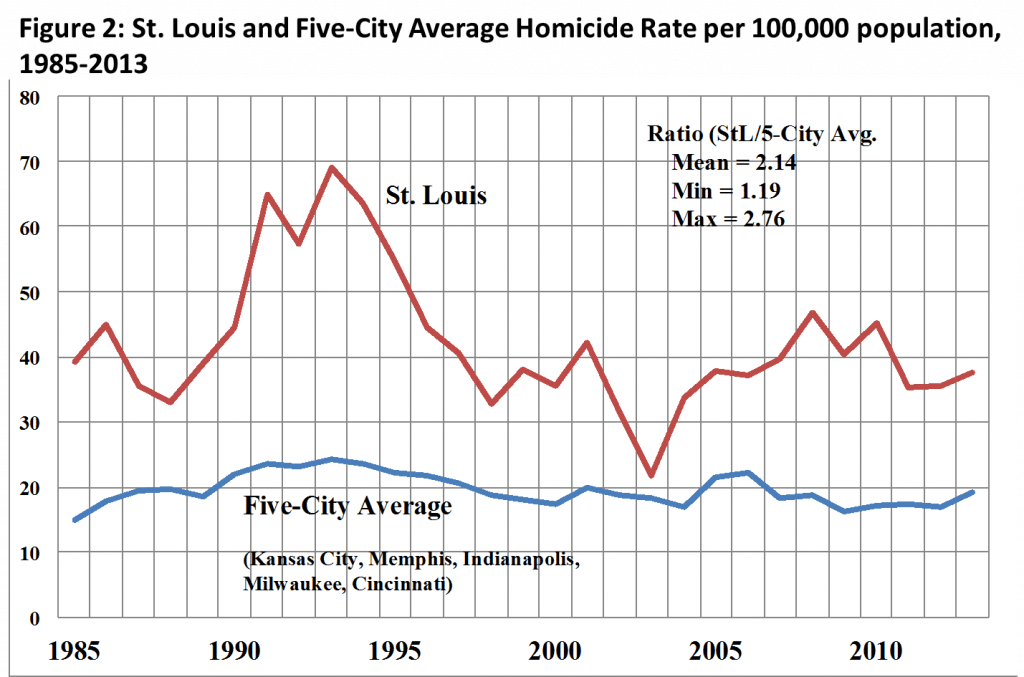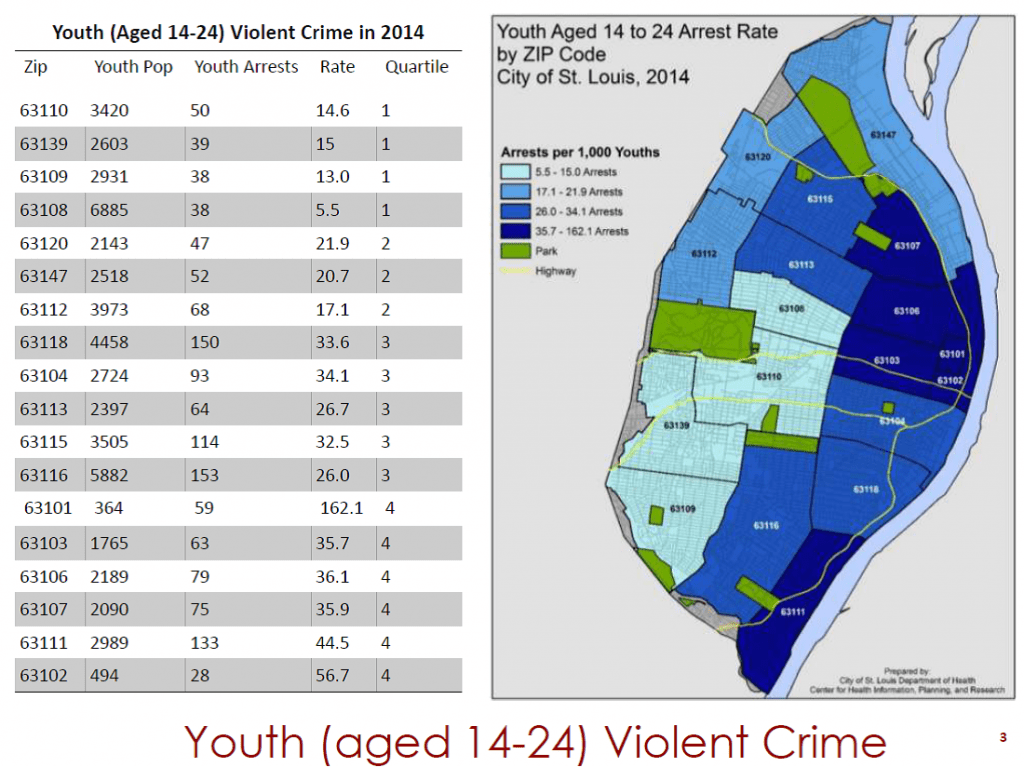Written by Carl Filler, MSW, director of strategic policy initiatives in the Mayor’s Office of the City of St. Louis
Cities across the United States have been grappling with endemic violence—often manifested in gun-related violence. While homicide rates—the most extreme form of violent crime—increased drastically from the 1960s through the early 1980s and sustained through 1990, the rate of homicides have decreased to 50 year lows. In fact, not since the early 1960s have we seen homicide rates as low as they are today.
The City of St. Louis has largely mirrored these trends although there has been a significant spike in the past year particularly among young people (under age 25). Whether this is a trend that’s here to stay or an unusual spike, we have yet to determine. However, St. Louis has had perennially high rates of crime and violence. Figure 1 (created by Richard Rosenfeld at UMSL) details the overall homicide rates in St. Louis and nationally – while the trends are the same, St. Louis’ rate (left axis) is consistently higher than national rates (right axis).

Figure 2 (also created by Richard Rosenfeld at UMSL) details homicide rates in St. Louis and its “peer” five-city average. Again the shape of the trend is the same but St. Louis is higher overall homicide rate.

In 2012, in recognition of the high violent crime rate, particularly among young people, the Mayor’s Commission on Children, Youth and Families created a Youth Violence Prevention Task Force. Data showed that the City’s firearm death for youth is more than three times the national rate and the St. Louis metro area was ninth in the nation for the number of youth murdered by guns. In the City, almost half (46%) of all victims are under age 25 while over half (51%) of all suspects are believed to be under age 25.
This Task Force, funded by the Missouri Foundation for Health, Deaconess Foundation, and Incarnate Word Foundation, engaged in a nearly year-long process of community and stakeholder engagement. The result was the 2013 Regional Youth Violence Prevention Community Plan. The plan is organized around the P.I.E.R. (Prevention, Intervention, Enforcement and Reentry) framework, put forth by Robert J. Kipper, the former Executive Director of Virginia’s Gang Reduction Program and internalized by the DOJ in their National Forum on Youth Violence Prevention.
The City then moved into implementation of these recommendations through the creation of the Youth Violence Prevention Partnership in late 2014. Recognizing that, per the National Forum, that “multidisciplinary partnerships are key,” the City convened a group of key partners from:
- Criminal Justice (Police, Prosecutors, and Courts)
- Mental Health
- Education
- Public Health
- Faith Community
- Social Services
- Funders
- Higher Education
Meeting monthly, representatives from the 12 organizations advance the strategic plan tactics. The group identifies evidence-based interventions in the strategic priority, funding sources, and then implementing partners. Accomplishments of the Community Plan include the creation of STL Youth Jobs—a job program for youth aged 16–24 in eight target neighborhoods. Beyond expansion of the youth jobs program, the YVP Partnership is pursuing grants and programs around restorative justice, Crime Prevention Through Environmental Design, out of school suspension reduction, increased mental and behavioral health services for youth, and supplemental supportive employment programming for youth reentering the City from confinement.
The City is also working to create a Community Safety Scorecard (CSS)—a zip code level analysis and report to the Community on risk and protective factors. Figure 3 (created by the City’s Department of Health with SLMPD data) outlines a sample of what the CSS will look like as well as outlining the landscape of youth violent crime offending.
